A random encounter on a train to Toronto leads Melanie Kitzan to a bar in Graffiti Alley and the powerful love story of a new friend.
All tagged Canada
A Terrifying Day of Salmon Fishing
The "red alert" broadcast email warned anglers, "it's going to be brutal, dress warmly, don't wear runners." Vancouver's weather forecast called for 100% chance of heavy rainfall and high wind. That would translate to a 100 millimeters of drenching rain. The deluge accompanied by 90 kilometer winds would produce horizontal precipitation.
Vancouver Chinook Classic Derby, an annual catch and release salmon tournament shouted out the forecast proclaiming a finality, "The show must go on."
Running Aground in British Columbia
by Kristine Mietzner
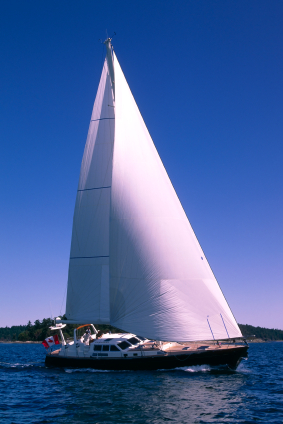 I dropped the bright white main sail, secured the halyard, tied six marine blue nylon ties around the sail’s bright white folds, and finally, stepped back into the cockpit. The sailboat purred as my children, their father, and I approached Oak Bay Marina under engine power.
I dropped the bright white main sail, secured the halyard, tied six marine blue nylon ties around the sail’s bright white folds, and finally, stepped back into the cockpit. The sailboat purred as my children, their father, and I approached Oak Bay Marina under engine power.
A bald eagle soared high above us, a curious raven cawed, flying above the mast, and a gull landed on the bow, checking us out.
Standing in the cockpit of the Sagale on a sun-filled August afternoon, Mark and I prepared to dock near Victoria, British Columbia. In the main salon 14-year-old Anna read Little Women while eight-year-old Ben played with Legos on the cabin floor.
Mark looked at the water, met my eyes, and called, “Read the depth meter!”
Scanning the red numbers on the black box attached to the cockpit wall, I said, “Thirty feet.” We slowly moved toward the marina.
“What does it say now?” Mark asked.
“Twenty feet.” A few moments later I called, “Fifteen,” in a more concerned tone. As the depth grew shallower, I shouted, “Thirteen! Mark, it’s not deep enough. Turn around! We’ll hit bottom. Get us in reverse.”
“We’re fine,” he replied. “That’s only the distance from the tip of the keel on down.”
“Not! It’s the distance from the water line to the bottom? We’re going to hit bottom! See for yourself,” I said.
We both looked over the rail and saw the sea floor through the clear, translucent, aqua water. The ginger-colored sand appeared as close as ten feet but it was difficult to be certain with the sunlight refracting through the water. In any case, it was far too late to stop the forward motion of the vessel. I glared at Mark as he repeated, “We’re fine. We’re fine.”
He is so wrong! This is so typical and here I am trapped on this boat with him.
Hunting Higdens in Newfoundland
With no documentation or living family left to question, it seemed a long shot to trace my grandmother’s roots in Newfoundland. My father used to say his mother was from Harbour Grace, that she worked ‘in service’ there. My aunt said no, she was from Salmon Cove or perhaps Trinity. My internet search was proving futile. Without my grandmothers’s birth certificate, birth date, baptism records (which apparently burned in a church fire) or even childhood photos, I didn’t have much to go on. I would have to travel to Newfoundland & Labrador to see what I could dig up, and I would take along my favourite chauffeur, my husband John.
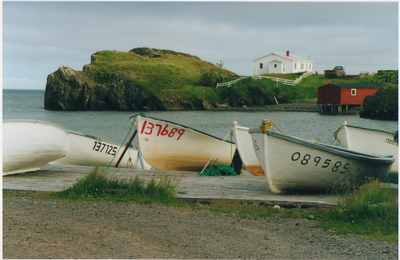 My ancestors emigrated to Ontario from Newfoundland about a hundred years ago. My grandparents George Spencer and Elfreda Higden were both Newfoundlanders, as were their parents and grandparents before them. George died at age 50, but Alfreda lived on to age 83, spending her final days living with us in her ‘granny suite’. I decided to focus my genealogical search on her.
My ancestors emigrated to Ontario from Newfoundland about a hundred years ago. My grandparents George Spencer and Elfreda Higden were both Newfoundlanders, as were their parents and grandparents before them. George died at age 50, but Alfreda lived on to age 83, spending her final days living with us in her ‘granny suite’. I decided to focus my genealogical search on her.
Here’s what I was told about my grandmother. She was a staunch Methodist, she loved the monarchy, and her deafness was caused by a childhood case of diphtheria. This instilled in her a suspicion and a fear that others were always talking against her, and it gave her a crabby edge. She fought with her husband incessantly.
Here’s what I remember about my grandmother. Into her eighties she weighed about 100 pounds and kept her grey hair curled up in bobby pins day and night. She could lipread from across the room, and she squinted her eyes and shook her cane if she didn’t like what she saw. She had these strange expressions like “Stay where yer at, and I’ll come where yer to” and “Mind yer mouth.”
One day, I was deadly embarrassed to catch Elfreda in her raggedy fur coat hitchhiking near our house in the suburbs down to the mall. I ran in to tell my father, but all he said was: “You know she’s from Newfoundland” as if that explained everything. I supposed that Newfoundland was like another country, where they did things differently.
story and photos by Rachel Dickinson
A week before what would have been my parents sixtieth wedding anniversary I found myself heading to Quebec City and the Fairmont le Chateau Frontenac, the very hotel my parents stayed in on their honeymoon. I believed, at the time, that this was strictly coincidental, for I had no desire to recreate the beginning of a failed marriage, but a part of me also strongly suspected that there was no such thing as pure coincidence.
words + photos by Noella Schink
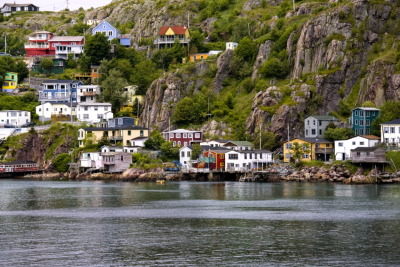 Most know of Newfoundland only because the Titanic almost made it there and… well, I guess that was the only time I’d heard of the island before I set off for it, backpack bulging. After hearing it was pretty, I decided I would travel there in an effort to unwind after my harrowing senior year. I wanted to rough it, explore new terrain; I was hopeful for a dose of nature’s rejuvenation after the fluorescent lockdown of high school.
Most know of Newfoundland only because the Titanic almost made it there and… well, I guess that was the only time I’d heard of the island before I set off for it, backpack bulging. After hearing it was pretty, I decided I would travel there in an effort to unwind after my harrowing senior year. I wanted to rough it, explore new terrain; I was hopeful for a dose of nature’s rejuvenation after the fluorescent lockdown of high school.
My month-long trip started in central Maine. It took 12 hours to drive into Canada, through quaint New Brunswick and rural Nova Scotia, to the furthest tip of Cape Breton Island where “Lick-a-Chick” fried chicken’s neon billboard came out of the misty night as the only sign of life aside from the ferry terminal. It was a six-hour, overnight ferry ride to Port-aux-Basques, Newfoundland.
The early morning fog did nothing to hinder my high spirits and I immediately took off on the scenic, albeit lonely, Trans-Canada Highway. I stopped at every brown and yellow Provincial Park sign, giddy for the start of my venture. J.T. Cheeseman gave me a chuckle with its goofy name, but the chilly tidepools and sweeping dunes were gorgeous. Little did I know the Newfie place names would only get quirkier as the scenery turned more dramatic.
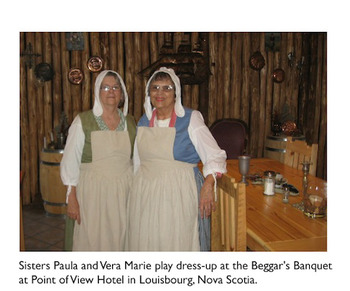 On our first trip together, we covered only a few blocks in a neighborhood of two-story white wooden houses in Columbus Ohio. I was pushing my sister Paula's stroller. (Ask her. She would no doubt say that I was always pushy.) At a few months old, she was oblivious to the great world around us--the bulbous cars parked along the street, the empty lot, dusty in the summer sun, or the brick store buildings up ahead on Cleveland Avenue. I, on the other hand, being ten years older, ten and a half when she was only six months old, I knew about everything.
On our first trip together, we covered only a few blocks in a neighborhood of two-story white wooden houses in Columbus Ohio. I was pushing my sister Paula's stroller. (Ask her. She would no doubt say that I was always pushy.) At a few months old, she was oblivious to the great world around us--the bulbous cars parked along the street, the empty lot, dusty in the summer sun, or the brick store buildings up ahead on Cleveland Avenue. I, on the other hand, being ten years older, ten and a half when she was only six months old, I knew about everything.
As I walked, and she patted her chubby hands together, I daydreamed about how she would grow up with fond memories of her loving big sister and be eternally grateful for my attention and care. (Always about me, wasn't it, Paula?)
These little walks down the block were definitely not the only trips we took as children. Our parents loved to load up the car and go--most anywhere. Sometimes long car trips, sometimes just a drive down to the Scioto River for a picnic. On Sunday drives in the Ohio countryside, seeing the landscape between our father's salt and pepper crewcut hair and our mother's black bun, we would shout out “Go left” or “Go right” or “Go straight” at each interseciton--a kind of sibling Mapquest. It was a democratic route finding that our dad adventurously accepted. “Go” was the operative word.
words + photos by Don Mankin
My two Teva-clad feet poked above the water, framing the view of the mouth of the cove spilling into the broad channel before us. The silhouettes of several tree-covered islands and mountains overlapped in different shades of pastel and receded in the distance. I was floating on my back in the waters of coastal British Columbia. Not exactly the Caribbean – no palm trees, no rum drinks with paper umbrellas, and the water temperature was more than a tad or two colder. But the water was warm enough for a late afternoon swim, the scenery was more dramatic, and there was no one else to be seen other than my four sea kayak companions relaxing after a long day of paddling in the warm bright sunshine of the aptly named Sunshine Coast.
The Sunshine Coast is just a relatively short drive and an even shorter flight northwest of Vancouver. It’s easily accessible but still feels somewhat remote -- most of the coast above Powell River, the “urban” center of the region, can only be reached by boat or floatplane. Like almost all of British Columbia's coast, it is strikingly beautiful -- islands of all sizes covered in Douglas fir, hemlock, and cedar; narrow inlets and fjords indenting the rugged coastline; and jagged snow-capped mountains in the distance framing long views across wide sounds. But unlike most of the B.C. coast, the Sunshine Coast is in the rain shadow of the low mountains of Vancouver Island to the west, so the weather is usually sunny, dry and warm, sometimes very warm.
Newfoundland: Three Lifetimes in Three Days
by Jules Older
I'm a travel writer, which means I'm a hit-and-run artist — New Zealand’s North Island today, the southern Sierra tomorrow. I'm the man who rarely returns.
Except to Newfoundland. I've been five times to Canada's easternmost, poorest and most interesting province. That chunk of rock in the North Atlantic, closer to Ireland than to Vancouver, 1,600 miles east of New York, captured my heart an hour into my first visit.
On the latest visit, I experienced three lifetime thrills in three consecutive days. Where else on earth can you do that?
THRILL ONE: ICEBERGS
It began in the tiny town of Springdale, where we hooked up with ace pilot Rick Adams, owner-operator of Springdale Aviation Ltd.
I flew over and around massive icebergs making their way south from Greenland. Never before had I seen a berg, and now they were scant yards below the Cessna 185's wing.
But if iceberging from a low-flying plane is a thrill, berging from a sea kayak is a life event. Because sea kayaking has a very steep learning curve -- you can be moderately proficient in an hour or so -- and because icebergs have a tendency to get stuck just offshore in the province's protected harbors, the experience is open to the many rather than the fit few.
It's a stunning experience. I drove over a hill and down into an outport, Newfoundland for coastal village. My heart thumped a little louder as I spotted the gleaming white of half a dozen icebergs towering above the dark water like dollops of cream on a chocolate cake. I couldn't wait to haul the kayak off the roof of the van.
Slaying myths through travel
I was just doing my part for immigration control, dispelling myths.
“You mean people down in the States don’t all have medical coverage?” My Canadian companions asked with jaws dropped.
“Afraid so,” I explained. “You can get cancer and have to choose between death and bankruptcy.”
This last fact is, well, an actual fact; it happened in my family. And here I was, in a candlelit lodge at a ski resort in the Canadian Rockies, perched astride a mountain in a World Heritage Site that’s one of the top travel attractions on earth, demonstrating for the umpteenth time that what really matters about travel is broadening narrow horizons rather than seeing gorgeous stuff. As Marcel Proust put it, the real act of discovery consists not in finding new places but gaining new eyes.
words + photos by Rachel Dickinson
In September I took a trip to Gaspe Peninsula in Quebec. And although I was really looking forward to seeing where the St. Lawrence River leaves the confines of its banks and flows into the ocean, one of the biggest draws for me was the night train from Montreal to Gaspe. Trains have always held a fascination for me, drawing on some part deep inside that really wants to live in the 19th century (although I’m not so much of a sentimentalist that I don’t know that 19th century train travel also involved lots of soot and hard seats).
The genesis of the idea was as sweet and breezy as the day we drove up from Boston to Saint-Jean-sur-Richelieu by way of Burlington, Vermont. My husband, Mitch, had always dreamed of floating in the clouds on a hot air balloon and serendipitously stumbled across the International Balloon Festival of Saint-Jean-sur-Richelieu near Montreal. An extended weekend in Canada seemed a great idea for an end of the summer family trip.
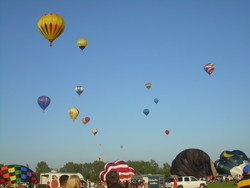 We were invited to ride in the VIP specialty balloons and excitedly anticipated floating in the clouds and seeing the world from an aerial perspective. As we drove into Saint-Jean-sur-Richelieu, we saw the colorful balloons dot the skies, a rainbow of colors and sea of shapes delighting spectators lining highways and fields.
We were invited to ride in the VIP specialty balloons and excitedly anticipated floating in the clouds and seeing the world from an aerial perspective. As we drove into Saint-Jean-sur-Richelieu, we saw the colorful balloons dot the skies, a rainbow of colors and sea of shapes delighting spectators lining highways and fields.
As we stood in the VIP section watching 150 balloons travel to the heavens, we were introduced to our pilots who explained that the specialty balloon protocol. After all the balloons were launched, they would evaluate whether our balloons could travel to the sky as the weather conditions were not ideal for the specialty balloons and time was running out. A spontaneous surge of stress spilled onto the field as we awaited the pilots decision.
The long-awaited ride to the sky quickly went south as time ticked by, the balloons sat on the ground, one daughter went to the ladies room and the other began to spiral. Out of nowhere the pilots announced we were leaving and everyone sprang into action. Emily and I went up in one bee-shaped balloon and Mitch and Rachel tumbled into the other.





